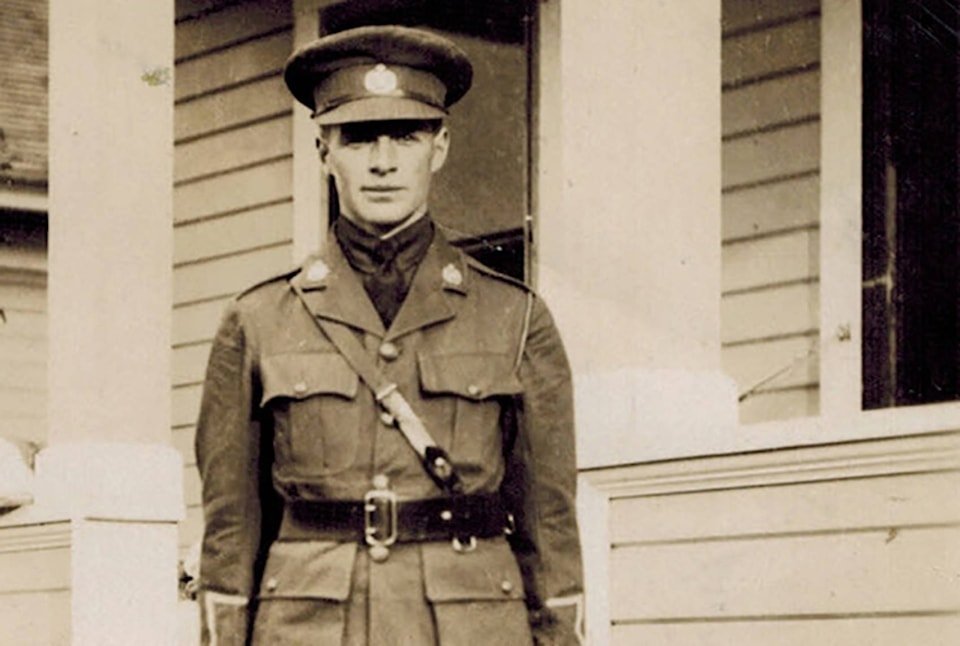A Kamloops son shot down and killed in the First World War will soon be honoured at the Kamloops Legion, 100 years after his death.
Norman Stuart Harper was killed on a bombing mission over Lahr, Germany, on June 25, 1918. The bomber group he was in was attacked by hostiles and his plane was struck in the radiator and last seen being pursued by five enemy planes.
On Wednesday, Harper — of no relation to the ranch and ski hill family — will be honoured at the annual veterans luncheon at the Royal Canadian Legion Branch 52 in Kamloops.
His nephew, John Stuart Harper, who is named after his uncle and has also served in the military, will say a few words and present a memorial plaque.
The elder Harper and his gunner, fellow Canadian D. G. Benson, were both killed the day they went down.
While no information was given to the families at the time and the graves weren’t discovered until years later, both were given a funeral with full military honours by the Germans.
“Chivalry was alive and well back then,” said the younger Harper.
“The German military provided a band and a German infantry regiment carried the coffin. And the local POW camp, which had British officers in it, let them attend the funeral.”
It was British officers who attended because his plane bore British insignia — unsurprising, considering Canada had no air force in those days. Norman Stuart Harper first went overseas as part of the 231st Battalion, Canadian Expeditionary Force, and underwent further training in England before somehow ending up in the British Royal Flying Corps — it’s not clear how.
“That’s an unknown,” Harper said. “I am assuming the offer was made to him.”
Harper said his uncle might have done otherwise if he’d done his homework, considering the average pilot in those days lasted a mere 11 days in the air.
“He lasted about two months,” Harper said.
Because Canadians in the air were so rare those days, Harper thinks his uncle might have been among the first Canadians to go down in Germany — and that the plane he was flying probably had something to do with it.
| Norman Stuart Harper was flying in a British Airco DH-9 biplane, similar to the one seen in this photo, when he was shot down over Lahr, Germany, 100 years ago. |
As Harper explained, the plane, a DH-9 biplane, he was flying was built to succeed an earlier model, but when it came time to install the engine, however, wartime demand meant the supply was needed elsewhere and builders turned to their backup engine, which was underpowered, leaving pilots and crew “sitting ducks” in the air.
Harper said the DH-9 never flew over enemy lines again mere months after the crash due to the casualties it was producing.
The two Canadian pilots posthumously lent their names to the Royal Canadian Legion Branch in Lahr, Germany. Around 1980, the legion was searching for a name for the branch and discovered the history of the two men, deciding to name it the Benson and Harper Branch 002, Lahr.
Now, Norman Stuart Harper is buried at Niederzwehren Cemetery in Kassel, Germany.
With non-combat military experience of his own, including 11 years in the armored corps and later service in the British Columbia Dragoons, nephew Harper said the real heroes are the ones with certain medals on their chests.
“The rest of us, we did our job,” he said.
And his uncle?
The same.
“Well, he did his job and he did it knowing his aircraft was a flying coffin, really,” he said.
Sean Brady, Kamloops This Week
